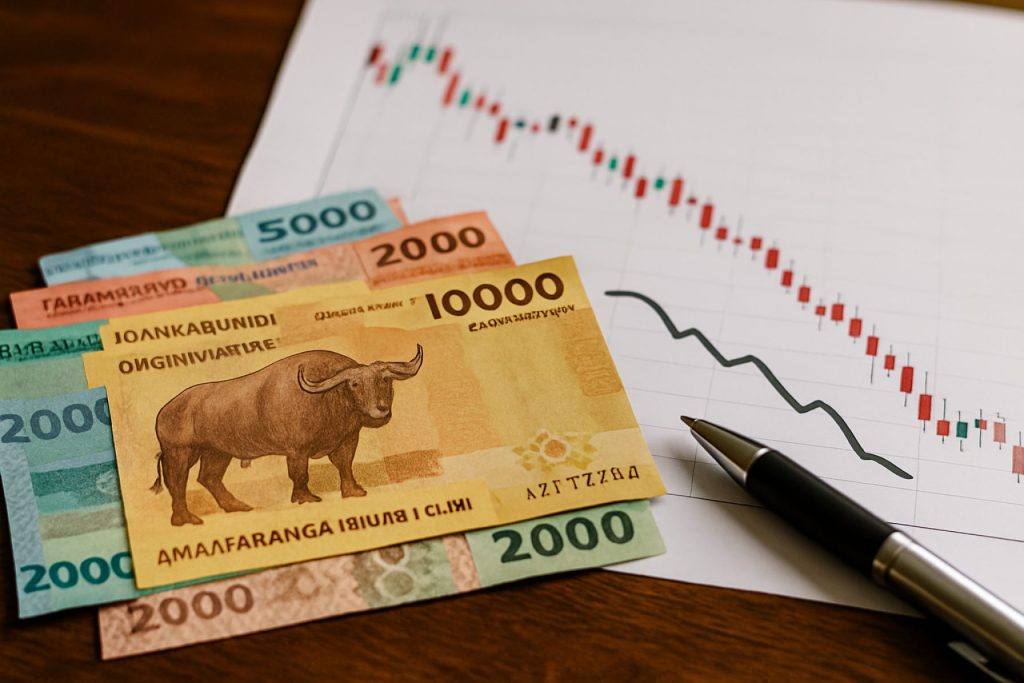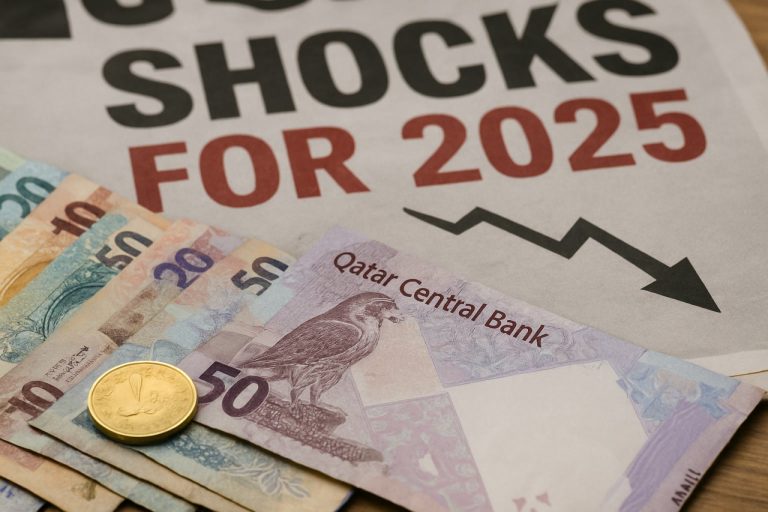
Table of Contents
- Executive Summary: Key Takeaways on Burundi’s Currency Outlook
- Current Currency Rate Landscape: 2025 Baseline Analysis
- Major Economic Drivers Influencing Burundi’s Exchange Rates
- Official Government and Central Bank Policies
- Legal and Tax Compliance: Currency Exchange Laws in Burundi
- Key Statistics: Recent Trends and Historical Performance
- Impact of Global and Regional Markets on Burundi’s Franc
- Expert Predictions: 2025–2030 Currency Rate Scenarios
- Risks, Volatility, and Mitigation Strategies for Stakeholders
- Conclusion: Strategic Recommendations and Resources
- Sources & References
Executive Summary: Key Takeaways on Burundi’s Currency Outlook
Burundi’s currency outlook for 2025 and the years ahead is shaped by a confluence of macroeconomic, regulatory, and structural factors. The Burundian franc (BIF) has historically faced significant pressure due to persistent trade deficits, limited foreign currency reserves, and macroeconomic challenges. Recent policy interventions and regulatory changes signal a cautious but deliberate approach by authorities to stabilize the currency and align it more closely with market fundamentals.
- Exchange Rate Liberalization: In June 2023, the Banque de la République du Burundi (Central Bank of Burundi) initiated a major exchange rate reform, moving away from a tightly managed regime towards greater flexibility. This adjustment led to a sharp depreciation of the official rate, narrowing the gap between official and parallel markets.
- Law and Compliance: Recent directives require all foreign exchange transactions to be conducted transparently through licensed intermediaries. The Central Bank has strengthened compliance monitoring and introduced new reporting obligations for financial institutions to curb illicit FX activities and improve transparency (Banque de la République du Burundi).
- Key Statistics: As of early 2024, the BIF had depreciated by over 35% following the liberalization. The Central Bank’s foreign reserves remain below the internationally recommended three months of import cover. Inflation, largely driven by imported goods, remains in double digits (Banque de la République du Burundi).
- Outlook for 2025 and Beyond: While short-term volatility in the BIF is expected to persist, medium-term prospects hinge on strengthening external financing, increasing export revenues (notably from coffee and tea), and sustained regulatory reforms. Continued engagement with international partners and prudent fiscal management are critical for stabilizing the currency and restoring investor confidence.
- Risks and Considerations: Key risks include exposure to external shocks, vulnerability to commodity price swings, and potential delays in reform implementation. Ongoing compliance and enforcement of FX regulations will be crucial in supporting currency stabilization efforts.
In summary, while Burundi’s currency faces ongoing headwinds in 2025, recent reforms and compliance measures provide a foundation for gradual stabilization. Stakeholders should anticipate further changes in regulatory frameworks and remain vigilant to evolving macroeconomic dynamics.
Current Currency Rate Landscape: 2025 Baseline Analysis
Burundi’s currency, the Burundian franc (BIF), continues to experience volatility as the country navigates complex economic, regulatory, and geopolitical pressures in 2025. The official exchange rate has traditionally been managed by the Bank of the Republic of Burundi (BRB), which sets reference rates, monitors compliance, and oversees the foreign exchange (forex) market. However, persistent macroeconomic imbalances, limited foreign reserves, and recurring external shocks have contributed to a widening gap between official and parallel market rates.
Recent key events shaping the currency rate landscape include the government’s incremental foreign exchange reforms. In 2023 and 2024, BRB began relaxing some restrictions on foreign exchange transactions to address acute foreign currency shortages and to comply with recommendations from international partners such as the International Monetary Fund. The BRB has also stepped up enforcement of compliance requirements for banks and bureaux de change, emphasizing transparent reporting and adherence to anti-money laundering protocols, in alignment with the BRB Regulation on Forex Operations.
Statistically, the BIF depreciated by over 20% against the US dollar between mid-2023 and early 2025, according to Bank of the Republic of Burundi official data. The spread between official and parallel rates remains significant, sometimes exceeding 30%, reflecting ongoing market inefficiencies and foreign exchange rationing. As of Q1 2025, the BRB’s published exchange rate hovered around 2,500 BIF per USD, while parallel market rates reportedly surpassed 3,200 BIF per USD.
- Monetary Policy Outlook: The BRB is expected to maintain a cautiously managed float, allowing for limited flexibility while intervening as necessary to curb excessive volatility. Further liberalization is anticipated, but will likely be gradual to avoid destabilizing inflation or triggering further capital flight.
- Legal and Compliance Trends: Ongoing regulatory reforms are designed to align with regional standards, particularly those of the East African Community (EAC). Financial institutions are under increased scrutiny to comply with foreign exchange transaction reporting and to prevent illicit capital flows.
- Outlook for 2025–2027: Currency rate predictions suggest continued pressure on the BIF, with potential for further depreciation unless export revenues (mainly coffee and tea) improve or external funding increases. Policy effectiveness and compliance enforcement will be pivotal in narrowing the official-parallel rate gap and restoring confidence in official exchange mechanisms.
In summary, Burundi’s currency landscape in 2025 is characterized by regulatory adjustments, persistent external imbalances, and a controlled but pressured exchange rate regime. The government’s ability to implement reforms and attract foreign exchange inflows will be decisive for future stability.
Major Economic Drivers Influencing Burundi’s Exchange Rates
Burundi’s currency rate predictions for 2025 and the immediate years ahead are closely linked to its key economic drivers, government policy shifts, and compliance with international obligations. The country’s exchange rate, historically managed through a tightly controlled regime by the Banque de la République du Burundi (Banque de la République du Burundi), has faced considerable volatility due to persistent trade deficits, reliance on imports, and limited foreign currency reserves.
A major economic driver affecting the exchange rate is the country’s ongoing trade imbalance. According to the Institut de Statistiques et d'Études Économiques du Burundi, Burundi’s exports remain dominated by primary agricultural products, particularly coffee and tea, while imports of fuel, manufactured goods, and foodstuffs consistently outpace export earnings. This structural deficit increases pressure on the Burundian franc (BIF), amplifying its susceptibility to depreciation.
In 2023, the government initiated exchange rate reforms that partially liberalized the foreign exchange market and devalued the BIF by over 30% to address persistent parallel market activity and comply with recommendations from international partners such as the International Monetary Fund. These measures are part of ongoing efforts to align official and market rates, enhance transparency, and attract external financing.
- The Banque de la République du Burundi continues to monitor compliance with revised foreign exchange regulations, imposing stricter reporting and reserve requirements on financial institutions to curb speculative activities and ensure currency stability.
- The government’s 2023-2027 National Development Plan emphasizes export diversification and import substitution to improve the current account position—key for long-term exchange rate stability.
Key statistics from the Institut de Statistiques et d'Études Économiques du Burundi indicate inflation remains elevated—projected near 12% for 2024—while foreign reserves cover less than three months of imports, underscoring ongoing vulnerability to external shocks.
Looking ahead to 2025 and beyond, most official agencies forecast gradual stabilization if reforms continue and macroeconomic conditions improve. However, Burundi’s currency rate predictions remain contingent on sustained export growth, adherence to fiscal discipline, and successful engagement with multilateral partners. Persistent structural weaknesses—such as limited industrialization and vulnerability to commodity price swings—are likely to moderate the pace of any currency appreciation.
Official Government and Central Bank Policies
In 2025, Burundi’s currency rate policies and outlook are shaped by an evolving regulatory environment and direct interventions from the national government and the central bank. The Burundian franc (BIF) remains under a managed float regime, with the Banque de la République du Burundi (BRB) playing a central role in setting and adjusting the official exchange rate. Historically, the BRB has maintained a tightly controlled foreign exchange market, with periodic official devaluations to address persistent currency pressures and foreign reserve shortages.
Recent years have seen the government implement a mix of administrative controls and cautious liberalization. In 2023, the BRB moved to further centralize currency exchange operations, requiring all authorized dealers to report transactions and adhere to set margins. This effort was intended to curb parallel market activities and improve transparency in the allocation of scarce foreign currency, especially for essential imports such as fuel, medicines, and agricultural inputs (Banque de la République du Burundi).
On the legislative front, the Government of Burundi has reinforced compliance obligations through updated anti-money laundering (AML) and foreign exchange regulations. These measures are designed to align with regional standards set by the East African Community and to bolster international confidence in Burundi’s financial system. The Ministry of Finance and Economic Development Planning regularly reviews these laws to address emerging risks and to strengthen oversight of cross-border financial flows.
Key statistics indicate that the official exchange rate has continued to experience gradual depreciation, with the BRB adjusting the rate to reflect external imbalances and domestic inflationary pressures. The annual inflation rate hovered above 10% in 2024, driven largely by global commodity price fluctuations and the limited availability of foreign reserves (Banque de la République du Burundi).
Looking ahead to 2025 and beyond, the outlook for Burundi’s currency rate remains cautious. The BRB is expected to maintain its interventionist approach, prioritizing macroeconomic stability and gradual alignment with market forces. However, currency restrictions and compliance requirements are likely to persist until there is a substantial improvement in export earnings, foreign investment inflows, and reserve adequacy. Major reforms—such as a gradual move towards a more flexible exchange rate regime—will be contingent on broader economic stabilization and the restoration of confidence among international partners.
Legal and Tax Compliance: Currency Exchange Laws in Burundi
Burundi’s currency exchange framework remains heavily regulated, reflecting the nation’s efforts to stabilize the Burundian franc (BIF) amid persistent macroeconomic pressures. The Banque de la République du Burundi (BRB), as the central monetary authority, exercises strict oversight over foreign exchange (FX) transactions and sets official exchange rates. In 2023, the BRB implemented a notable devaluation of the BIF, aiming to narrow the gap between the official and parallel market rates and comply with International Monetary Fund (IMF) recommendations for greater exchange rate flexibility Banque de la République du Burundi. This move was accompanied by the introduction of new regulatory measures requiring all FX transactions to occur via authorized intermediaries, with mandatory reporting obligations for financial institutions.
The legal framework for currency exchange is primarily governed by the Central Bank Act and supplementary directives issued by the BRB. According to these laws, all residents and businesses must declare and, in most cases, surrender foreign exchange earnings; unauthorized FX trading is strictly prohibited. Specific compliance obligations include:
- Licensing requirements for bureaux de change and commercial banks engaging in FX operations.
- Mandatory documentation and transparency for cross-border payments and receipts.
- Regular submission of FX transaction data to the BRB for oversight and statistical analysis Banque de la République du Burundi.
- Enforcement of anti-money laundering (AML) and counter-terrorist financing (CFT) measures within currency exchange activities Banque de la République du Burundi.
Key statistics indicate ongoing volatility in the BIF’s value. As of the start of 2025, the official exchange rate hovered around 2,900 BIF/USD, while parallel market rates were significantly higher, reflecting persistent FX shortages and high demand for hard currency. The BRB’s foreign reserves remain below optimal levels, restricting its capacity to intervene in the market and exerting continued downward pressure on the BIF.
Looking ahead, currency rate predictions for 2025 and the following years depend on several factors: the pace of fiscal reforms, external financial inflows, and the implementation of IMF-backed monetary policies. While gradual convergence between official and parallel rates is anticipated, high volatility is likely to persist unless structural issues—such as trade imbalances and limited export revenues—are addressed. Compliance with evolving currency exchange laws will remain critical for businesses, given the BRB’s strict enforcement stance and ongoing reforms in the legal framework governing FX operations.
Key Statistics: Recent Trends and Historical Performance
Burundi’s currency, the Burundian franc (BIF), has experienced significant volatility over the past decade, shaped by internal economic pressures, external shocks, and evolving monetary policies. As of early 2025, the official exchange rate hovers near BIF 2,850 per US dollar, with a persistent parallel market premium, reflecting ongoing foreign currency shortages and structural imbalances in the country’s external sector. The National Bank of Burundi (Banque de la République du Burundi) publishes daily official rates, which have shown a gradual but steady depreciation trend since 2020—averaging 6–8% annual weakening against the dollar.
Key statistics as of January 2025 indicate that foreign reserve levels remain critically low, covering less than two months of imports, well below the regional averages recommended by the East African Community (East African Community). The current account deficit persists at above 12% of GDP, driven by limited export diversification and high import dependency, particularly for fuel and manufactured goods. These dynamics place continuous downward pressure on the BIF.
- Official BIF/USD rate (Jan 2025): ≈2,850 (Banque de la République du Burundi)
- Parallel market premium: 25–40% above official rate (estimate based on central bank communications)
- Foreign reserves: below 2 months of import cover (Banque de la République du Burundi)
- Inflation (2024 avg): ≈18% (Banque de la République du Burundi)
- Current account deficit: >12% of GDP (Banque de la République du Burundi)
Historically, the BIF has been subject to managed depreciation by the central bank, with periodic interventions to smooth volatility. However, tightening external financing conditions, recurrent trade deficits, and limited donor inflows have constrained effective policy response. In 2023 and 2024, the government initiated modest exchange control reforms and intensified efforts to align the official and unofficial rates, but with limited success due to persistent structural constraints.
Looking forward, most official forecasts anticipate continued gradual depreciation of the BIF through 2025 and beyond, unless substantive improvements in export earnings, foreign investment, or donor support materialize. The government’s medium-term currency strategy, as outlined by the Ministry of Finance (Ministère des Finances, du Budget et de la Planification Économique), prioritizes reserve accumulation and incremental liberalization, but acknowledges the challenges posed by ongoing imbalances and inflationary pressures.
Impact of Global and Regional Markets on Burundi’s Franc
The currency exchange rate of the Burundian franc (BIF) is significantly influenced by both global and regional market dynamics, shaping the outlook through 2025 and the years ahead. Burundi operates a managed floating exchange rate regime, with the Bank of the Republic of Burundi (BRB) closely overseeing currency movements and foreign exchange policies. In recent years, the franc has faced persistent downward pressure due to structural trade deficits, limited export diversification, and constrained foreign exchange reserves.
Globally, the strength of the US dollar, changing commodity prices, and altered capital flows have created volatility for emerging market currencies, including the BIF. Since Burundi is a net importer of fuel, food, and manufactured goods, fluctuations in international oil and food prices have a direct impact on its trade balance and foreign reserve position. For 2025, the International Monetary Fund projects that external pressures will remain elevated, particularly if global commodity prices continue to be volatile (International Monetary Fund).
Regionally, Burundi’s participation in the East African Community (EAC) exposes the BIF to competitive dynamics with neighboring currencies, notably the Tanzanian shilling and the Kenyan shilling. Cross-border trade imbalances, informal currency markets, and varying monetary policies within the EAC can create arbitrage opportunities and add further unpredictability to the BIF’s exchange rate. In 2024, the BRB introduced additional compliance and anti-money laundering measures to align with EAC integration goals and to limit speculative activities that might destabilize the currency (Bank of the Republic of Burundi).
Key statistics from the BRB indicate that the official BIF/USD rate depreciated by approximately 20% between January 2023 and early 2024, reflecting persistent foreign currency shortages and growing demand for imports. The central bank continues to ration hard currency allocations, prioritizing essential sectors and seeking to rebuild reserves through tighter compliance on exports and remittances (Bank of the Republic of Burundi).
Looking forward, the BIF is expected to remain under pressure through 2025, with the pace of depreciation likely influenced by global inflation trends, regional integration progress, and the government’s success in attracting external financing. While regulatory reforms and regional harmonization efforts are expected to enhance resilience, the outlook remains cautious, with potential for further currency adjustments if external shocks persist.
Expert Predictions: 2025–2030 Currency Rate Scenarios
Currency rate predictions for Burundi from 2025 to 2030 must be viewed through the lens of recent economic developments, regulatory reforms, and regional trends. The Burundian franc (BIF) has historically been subject to significant volatility, largely due to persistent current account deficits, limited foreign exchange reserves, and periodic policy interventions. In 2023, the Banque de la République du Burundi (BRB) implemented a notable devaluation of the franc to address growing imbalances and to align the official exchange rate more closely with the parallel market, a move in line with recommendations by international stakeholders such as the IMF.
Key legal and regulatory changes have shaped expectations for the BIF. In May 2023, the BRB announced the liberalization of the foreign exchange market. This involved relaxing controls on foreign currency transactions and eliminating certain administrative barriers, with the goal of improving market efficiency and attracting foreign investment. The central bank has simultaneously strengthened anti-money laundering oversight, particularly for banks and bureaux de change, in compliance with evolving standards under the Loi sur la Réglementation des Changes and in alignment with regional frameworks from the East African Community (EAC).
Statistically, Burundi’s foreign exchange reserves remain below the recommended three-month import coverage threshold, as indicated in recent monetary policy statements by the Banque de la République du Burundi. Inflation rates have moderated from their 2023 peak but remain in double digits, contributing to depreciation pressures. The country’s trade deficit, driven by dependence on fuel, food, and manufactured imports, continues to constrain the BIF’s stability.
Looking ahead to 2025 and beyond, official forecasts from the BRB and regional economic assessments suggest several scenarios:
- If current reforms are sustained, gradual stabilization of the exchange rate is possible, contingent on increased donor inflows and improved export performance—especially in the coffee and tea sectors.
- Persistent external shocks or policy slippage could trigger renewed depreciation, especially if reserves remain low or inflation accelerates.
- Integration with EAC monetary frameworks may require further alignment of Burundi’s exchange rate regime, potentially leading to greater flexibility or, conversely, convergence with regional currency arrangements.
In summary, while expert consensus expects continued volatility for the BIF through 2030, the direction and magnitude of rate movements will be determined by the pace of reform implementation, fiscal discipline, and external economic conditions, as monitored by the Banque de la République du Burundi and regional authorities.
Risks, Volatility, and Mitigation Strategies for Stakeholders
The currency market in Burundi is characterized by significant risks and volatility, driven by macroeconomic imbalances, regulatory interventions, and external shocks. The Burundian franc (BIF) has historically experienced pressure due to limited foreign exchange reserves, persistent trade deficits, and episodes of political instability. For stakeholders—ranging from importers, exporters, financial institutions, and investors—understanding the landscape of risks and mitigation strategies is crucial for navigating currency rate fluctuations predicted for 2025 and beyond.
-
Key Risks and Volatility Drivers:
- Foreign Exchange Reserves: Burundi’s official reserves remain at critically low levels, often covering less than two months of imports, increasing the risk of abrupt currency devaluations (Banque de la République du Burundi).
- Exchange Rate Regime: The Central Bank actively manages the official exchange rate, but a widening gap persists between the official and parallel market rates, reflecting underlying market imbalances (Banque de la République du Burundi).
- Regulatory and Legal Risks: The government has enacted periodic import and capital controls, as well as stringent foreign exchange regulations, to stabilize the BIF and manage reserves (Banque de la République du Burundi). Sudden regulatory shifts can affect market confidence and transaction costs.
- External Shocks: Global commodity price changes, regional instability, and donor funding volatility can all impact currency supply and demand dynamics.
-
Compliance and Mitigation Strategies:
- Adherence to Foreign Exchange Laws: Stakeholders must comply with the Regulation on Foreign Exchange issued by the Central Bank, which governs currency transactions, documentation requirements, and reporting obligations.
- Hedging and Diversification: While the domestic derivatives market is limited, some businesses seek natural hedges through diversifying suppliers or invoicing in more stable foreign currencies where permitted (Banque de la République du Burundi).
- Liquidity Management: Maintaining adequate BIF and foreign currency balances, alongside close monitoring of official communications from the Central Bank, can help mitigate transaction and settlement risks.
- Stakeholder Engagement: Proactive dialogue with regulators and early adaptation to new compliance requirements are vital, given the government’s ongoing reforms in the foreign exchange sector.
-
Outlook for 2025 and Beyond:
- Given the persistent current account deficits and limited external support, currency volatility is expected to remain elevated through 2025. The Central Bank’s interventions may temporarily stabilize the BIF, but without significant structural reforms and reserve accumulation, long-term predictability is limited (Banque de la République du Burundi).
- Stakeholders should continue to monitor official policies, seek compliance advice, and prepare for further regulatory changes as the authorities pursue monetary and exchange rate reforms.
Conclusion: Strategic Recommendations and Resources
Currency rate predictions in Burundi remain subject to considerable uncertainty amid ongoing macroeconomic, regulatory, and geopolitical developments. For 2025 and the coming years, the Burundian franc (BIF) is expected to face continued depreciation pressures due to structural trade deficits, limited foreign reserves, and persistent inflationary trends. Strategic policy shifts, such as the partial liberalization of the foreign exchange regime in 2023, signal a willingness by the Bank of the Republic of Burundi to gradually align the currency closer to market realities. However, the central bank retains significant control over foreign exchange operations, with regular interventions and strict licensing for authorized dealers to mitigate volatility and ensure compliance with anti-money laundering requirements.
Businesses and investors should closely monitor regulatory updates, particularly regarding foreign currency transaction limits and repatriation of profits. Adherence to evolving compliance standards set by the Bank of the Republic of Burundi is crucial to avoid penalties or operational disruptions. Notably, the government’s 2024-2026 economic reform agenda, which includes measures to boost export revenues and attract foreign direct investment, may gradually ease currency pressures if successfully implemented (Ministry of Finance, Budget and Economic Planning). However, short-term currency stabilization remains challenged by Burundi’s reliance on agricultural exports, fluctuating donor support, and risks from regional instability.
Key statistics underscore the fragile outlook: Burundi’s foreign exchange reserves remain below three months of import cover, well under the threshold recommended by the International Monetary Fund. Official inflation exceeded 20% in 2024, driven by food and fuel price shocks, further eroding currency value and purchasing power. These dynamics are likely to persist into 2025, with most official projections anticipating moderate but sustained depreciation of the BIF unless significant external inflows materialize.
Strategic recommendations for stakeholders include:
- Regularly consult regulatory circulars and policy updates from the Bank of the Republic of Burundi to ensure full compliance with currency controls and reporting obligations.
- Engage with the Ministry of Finance, Budget and Economic Planning for guidance on tax incentives and investment regulations affecting foreign exchange activities.
- Monitor macroeconomic indicators published by the International Monetary Fund and the central bank for timely insights into reserve levels, inflation, and balance of payments trends.
- Assess hedging strategies and diversification options to mitigate exposure to currency volatility.
For authoritative resources and legal frameworks, consult the official portals of the Bank of the Republic of Burundi, Ministry of Finance, Budget and Economic Planning, and guidance from the International Monetary Fund on Burundi’s macroeconomic management.



